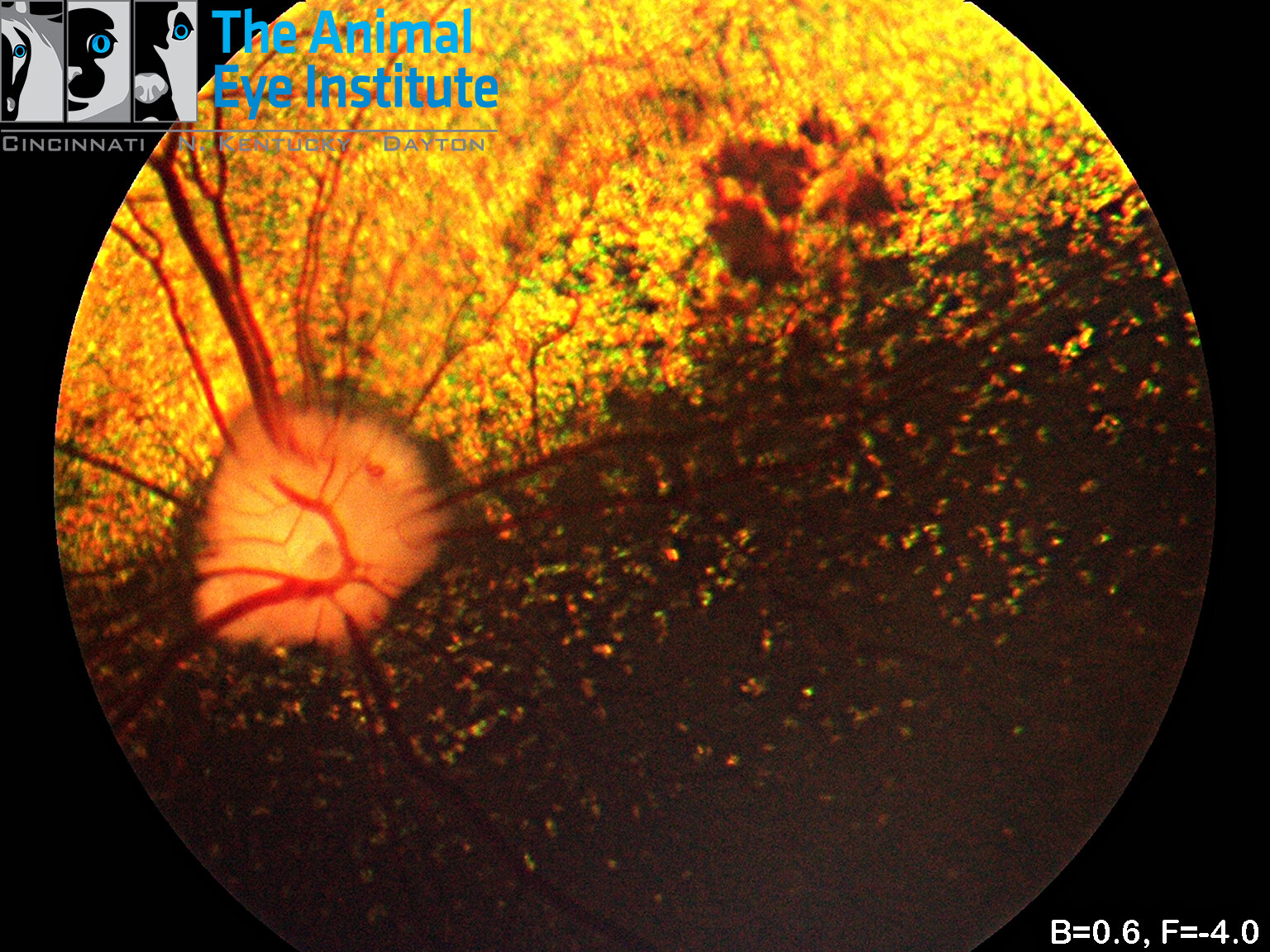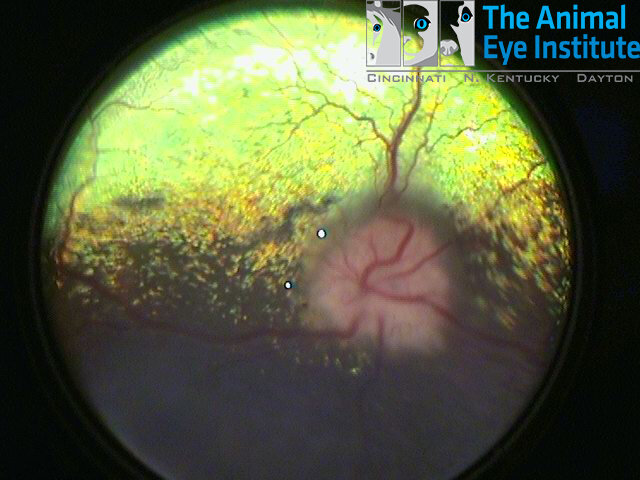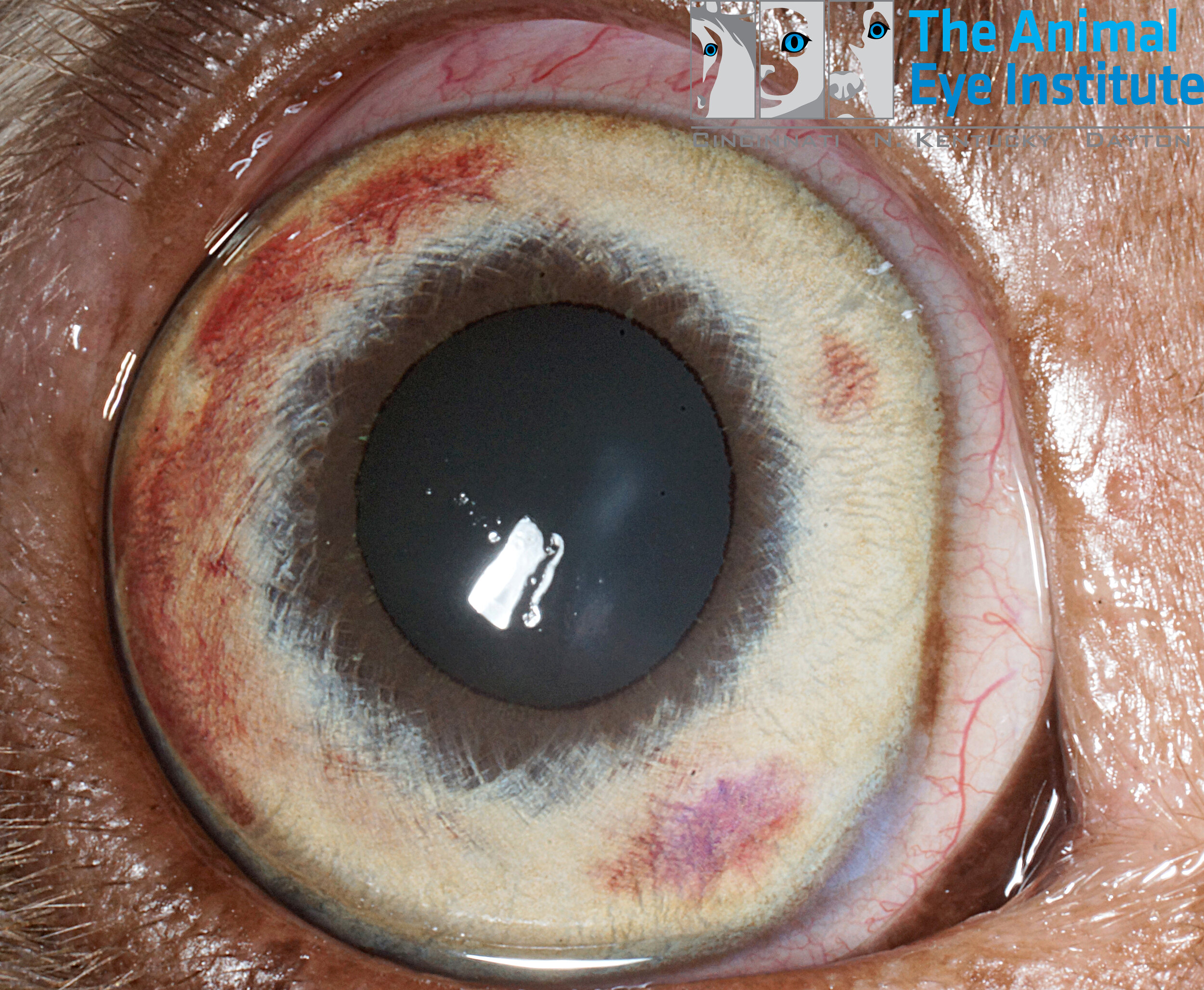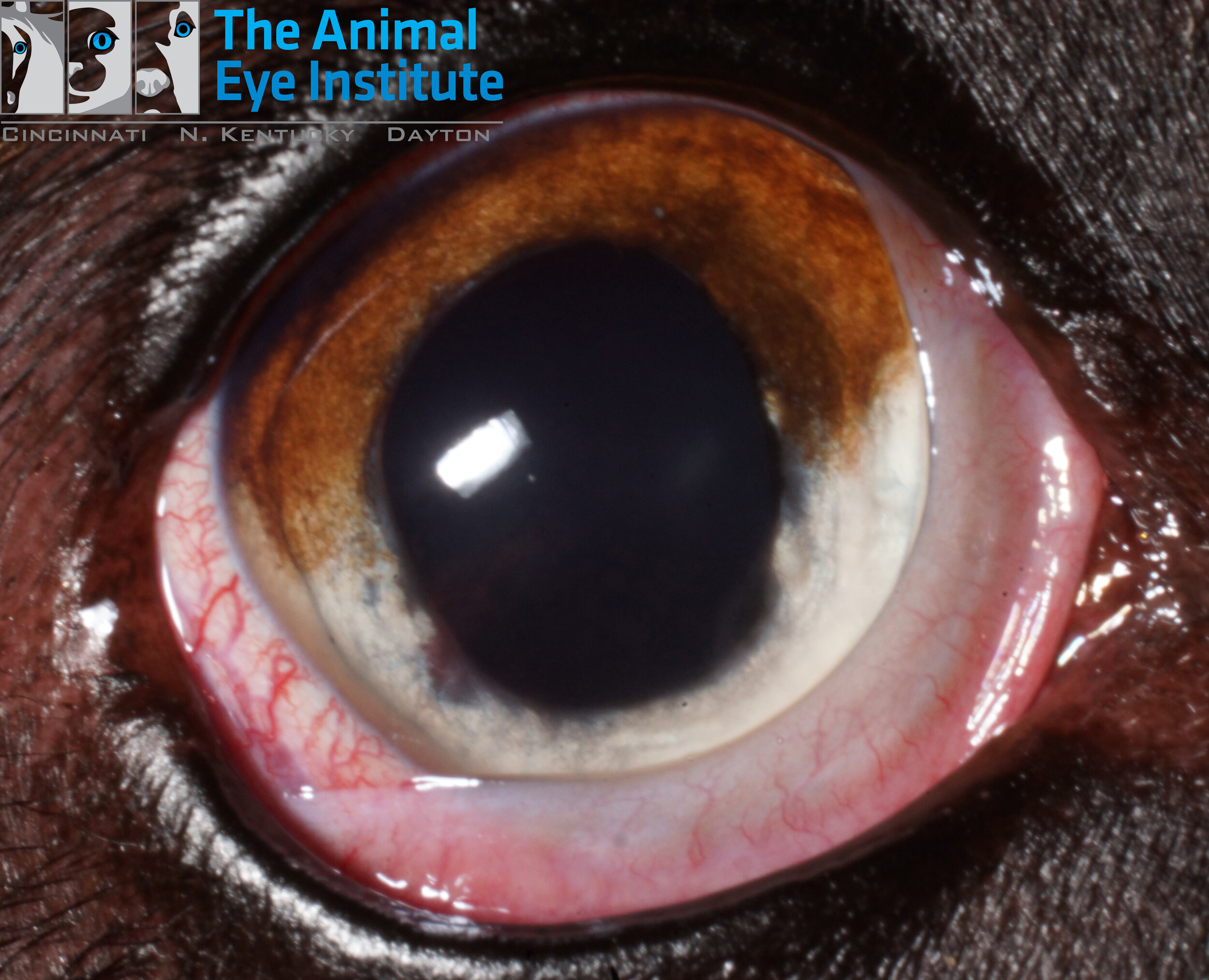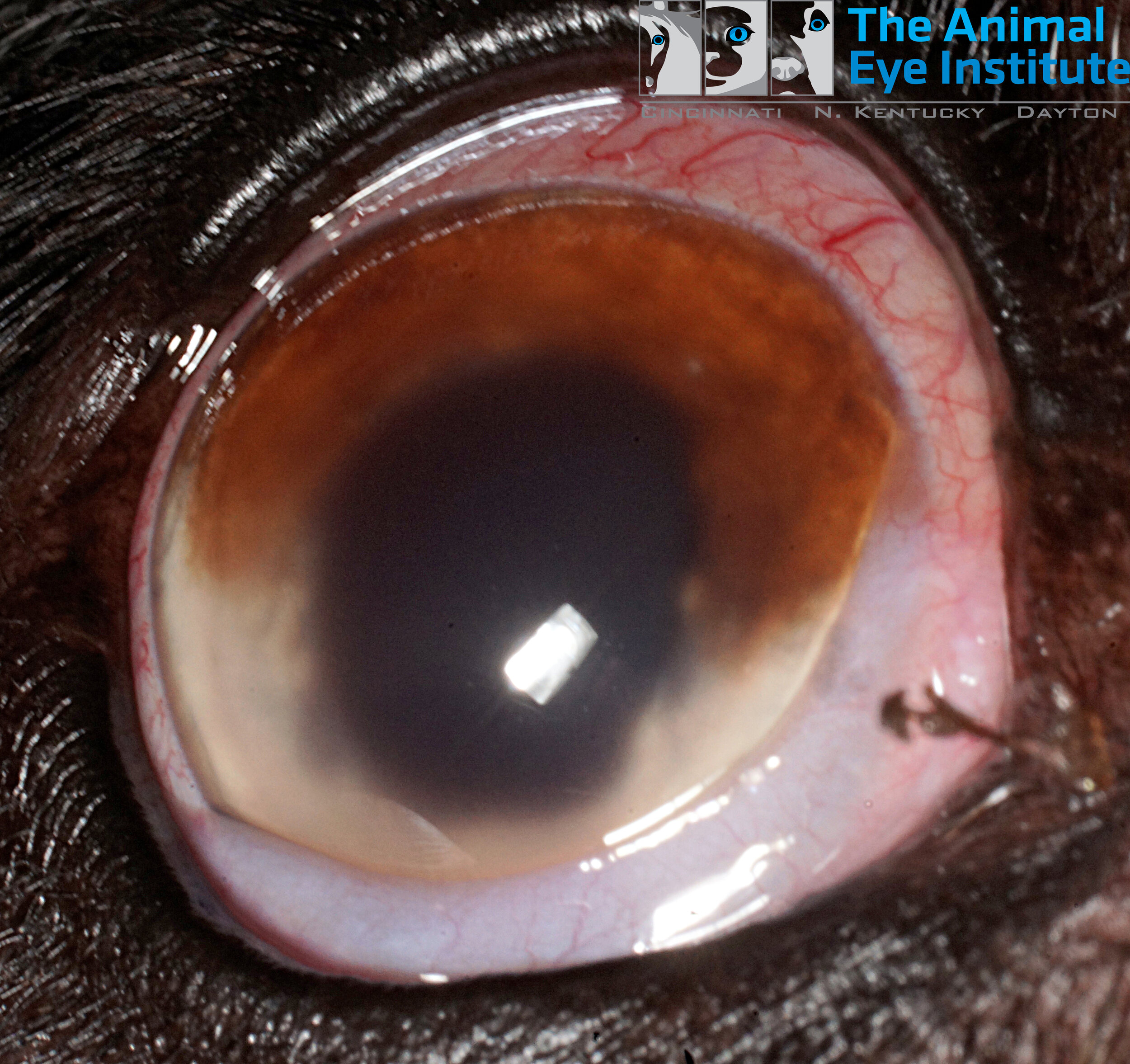Tickborne disease and ocular health
Case: Josie, a 10-year-old female small breed dog, first presented to The Animal Eye institute in 2013 for evaluation of a cataract in her right eye, and an overall smaller than normal size to her right eye (microphthalmia). Josie was started on an anti-inflammatory drop in her right eye to prevent secondary inflammation inside of her eye (uveitis) and glaucoma. She revisited the ophthalmologist for routine recheck examinations to examine the health of her left eye, and to monitor for any complications associated with her cataract in her right eye. In July of this year, Josie presented for a routine recheck examination and her owner did not have any concerns of her general health, vision or eye comfort. On examination of the back of her eye, Josie had multiple small areas of bleeding noted within the retina of her left eye.
Testing: The red spots noted on Josie’s fundus examination are called petechiae (small areas of bleeding) or subretinal hemorrhage. These little areas of bleeding occur secondary to broken blood vessels and can occur secondary to high systemic blood pressure (hypertension) or disorders of bleeding or coagulation. Systemic hypertension is commonly diagnosed concurrently with endocrine disease (diabetes mellitus, Cushing’s disease, hyperthyroidism) and kidney disease. When looking into a possible cause for retinal bleeding, a systemic blood pressure measurement is oftentimes recommended.
Systemic blood work can help to identify a low platelet count, electrolyte and liver enzyme abnormalities associated with endocrine disease, or signs of infection. An additional blood test can be used in cats to screen for hyperthyroidism. Tickborne infectious diseases (Ehrlichia canis, Anaplasma platys and Rickettsia rickettsia) infect white blood cells, platelets or the cells of blood vessels and can lead to low platelet count (thrombocytopenia), inflammation of blood vessels (vasculitis) and bleeding among other symptoms.
Case result: Josie’s systolic blood pressure was within the normal reference range for dogs at 160mmHg. Her systemic blood work (complete blood count, serum biochemistry) values were within normal reference ranges. After leaving the hospital, her owner recounted that Josie went hiking with her owner recently and could have exposed to ticks outside. Tickborne disease testing was recommended, and Josie had a positive antibody test result for Rickettsia rickettsia (Rocky Mountain Spotted Fever). Josie was treated for 6 weeks with oral doxycycline and is being monitored closely for any evidence of new bleeding. She has been doing great since starting therapy.
Discussion: Rocky Mountain Spotted Fever and the other tickborne diseases mentioned are obligate intracellular bacteria which are believed to be transmitted by tick bites. Dogs may develop fever, anorexia, lethargy, bleeding of mucous membranes and hairless skin and swollen lymph nodes (lymphadenopathy). Many dogs can appear asymptomatic aside from blood work abnormalities or elevated infectious disease titers. Josie is an excellent case example of a dog who was not symptomatic for disease at home. In her case, her diagnosis was made based on an incidental exam finding, prior to her showing signs of illness at home. Although she was being monitored primarily for progression of cataracts, visiting for frequent and routine recheck examinations allowed her veterinary ophthalmologist to discover a new finding which could affect her systemic health!


